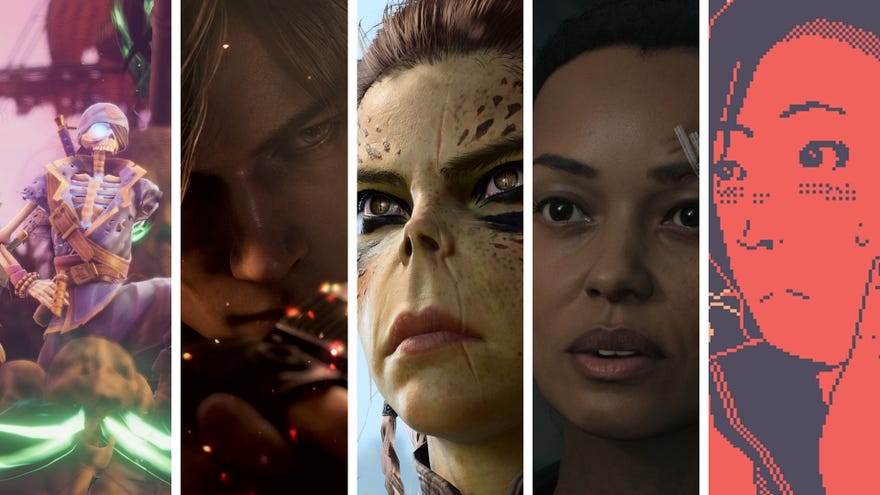Our 24 favourite games of 2023
As voted for by the RPS Treehouse
At last, every door on the RPS Advent Calendar has been ripped open, leaving nothing but foil wrapper remnants, and the odd pixel crumb of the digital delights once contained within them. But that doesn't festivities are over! Like a Boxing Day bubble and squeak, we've gathered together all of our favourite games of the year once again, this time in one handy location. If you've been following along with our Advent goings-on, you'll already know what our game of the year picks are for 2023, but just in case you missed them, here's the list in full. Enjoy!
Below, you'll find our 24 games of 2023, as voted for by the RPS editorial team. Like last year, every member of the team put together a personal top ten list, with our favourite game assigned ten points, our second favourite nine points and so on. All those votes were then totted up in a big spreadsheet, and the resulting list of games is what you see before you. One fun fact for you before we dive in: whereas last year we had to have a tie-break Slack debate between our top two choices, this year's winner stole the show with a massive lead of over 20 points from our number two choice, cementing its place as one of our firmest RPS favourites in quite some time.
Of course, there were still loads of games we loved individually that didn't make it into our Advent Calendar Game Of The Year list, but worry not. Our personal RPS Selection Boxes are returning for 2023, celebrating even more games we loved over the last 12 months. So make sure you tuck into those as well, which we'll be publishing every day for the rest of the holidays. For now, though, welcome to our 24 Game Of The Year picks for 2023.
24. Remnant II
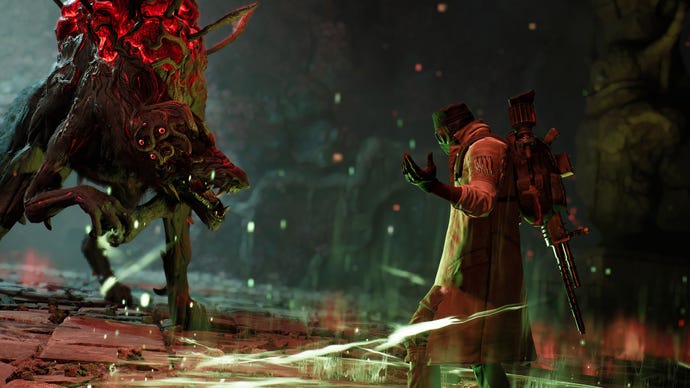
Ed: Former RPS vidbud Liam and I used to work together a fair bit. We put out longform vids for Inventory Space, chatted about duds like Redfall and triumphs like, errr, Sonic Frontiers, and sent each other memes of questionable quality. It was a heady time! In an effort to keep in contact since he bid the Treehouse adieu, we've played a good amount of co-op shooter Remnant 2 together. And we are absolutely smitten with it.
I never played the game's predecessor Remnant: From The Ashes, but it doesn't matter in the slightest because Remnant 2 stands on its own as a simple pleasure. By which I mean it's a looter shooter where you dodge roll out the way of spiked tentacles, fire a rifle, collect silly crystals, slot mods into sockets, and then repeat the process. Except repeating the process often means battling a boss, then being warped to "dynamically generated" (handcrafted zones, just randomly slotted together) areas where the rolls become more frantic and the crystals become sillier. It doesn't overextend itself or split out into some open world bollocks; Remnant 2 is happy existing as a pal-based shooter, and is all the better for it.
Funny thing is, there aren't a bucket load of guns to loot like say, Borderlands. But the the old-timey rifle, pistols, and shotguns you blast have such a lovely crack, that Remnant 2 is one of few FPS games I've played where I've not been bothered by a lack of regular metal. This rings especially true when you're warping between realms filled with dark fairies, and transitioning seamlessly into some machinist alien worlds, tangled forests, or gothic streets. Interesting environments and gunfeel keep things plenty engaging.
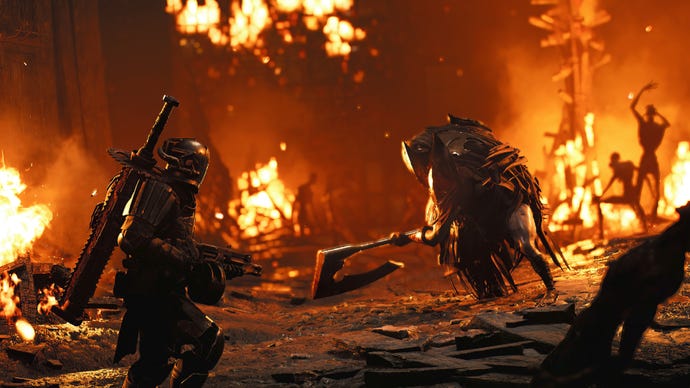
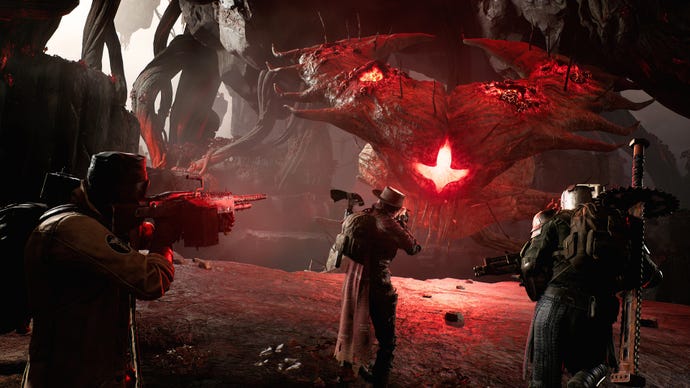
That's not to say Liam and I haven't encountered some wild guns on our adventures, as Remnant 2 does the Dark Souls thing where you can cash in a boss's gloopy material for a some form of gloopy special weapon. Liam's got a ghostly rifle wrapped in fingers that lets him go invisible for a bit and go berserk with rapid fire, while my fave is a block of stone that zaps baddies with jets of electricity.
And the bosses! Damn are they inventive. We've tangoed with a selection of giant sentient cubes in a series of narrow corridors, where winning wasn't about chunking down a health bar but learning routes to avoid a crushing. Another had us descend a winding staircase where we needed to avoid going too fast or too slowly through a deadly laser field. The boss wasn't so much an enemy, but a nerve-shredder of a scenario.
Sure, Remnant 2 isn't without its flaws. Namely, it's a bit unclear at times and we've missed a whole bunch of unlockable classes and guns because no-one was like, "Hey pal, you might want to check over here". But the game's so good at leveraging its strengths - being a banger of a co-op shooter that takes you to some deadly places - that it's a struggle to log off. In the midst of lots of 120-hour monsters, Remnant 2 is a pleasant surprise.
23. The Making Of Karateka

Jeremy: The gaming industry is rubbish at chronicling its own history. Hundreds of yesteryear's big box games are impossible to play on modern machines unless you're a retro computer collector or have a hankering for emulation. And even if you've got a Commodore 64 lying around or are an old hand at DOSBox, the faces and stories behind ancient games are lost to history more often than not.
Enter Digital Eclipse's The Making Of Karateka, which wasn't just one of the best "games" I played this year, but ranks up there on my list of the most important electronic experiences ever. I write "game" in quotes, since this is more of an interactive digital museum archiving the genesis of Jordan Mechner's seminal 1984 Apple II masterwork. When I say museum, I mean it - every aspect of Karateka's creation is lovingly encapsulated, from the rotoscoping techniques that Jordan used to capture the movements of his karate teacher to plans for an aborted sequel that never manifested, but eventually evolved into Prince of Persia.
Digital Eclipse have eagerly taken on the role of archivists in this fragmented industry, and while their previously released Atari 50: The Anniversary Celebration clearly set the stage for the approach taken here, The Making Of Karateka elevates their documentation efforts to new heights. The first of the so-called Gold Master Series, The Making Of Karateka presents an interactive timeline that you can scroll through to explore not only Karataka's history, but the early life of Jordan Mechner himself. Want to see the letters that Jordan exchanged with Brøderbund when he was still a Yale student trying to get his game published? They're all present. Interested in an amusing bit of fan mail from a youthful John Carmack demanding that Jordan reveal his Apple II programming secrets? That's here too. Then there are interviews with at least a dozen high profile industry figureheads addressing how Karateka inspired them, not to mention an in-depth audio examination of the leitmotifs in Karateka's soundtrack that were composed by Jordan's father, Francis Mechner. The entire package is a thing of beauty - an electronic version of a coffee table book, but whereas coffee table books tend to sit there and do nothing, The Making Of Karateka begs to be experienced.
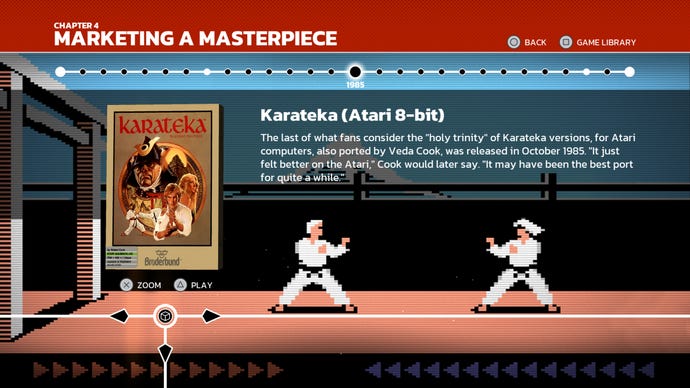
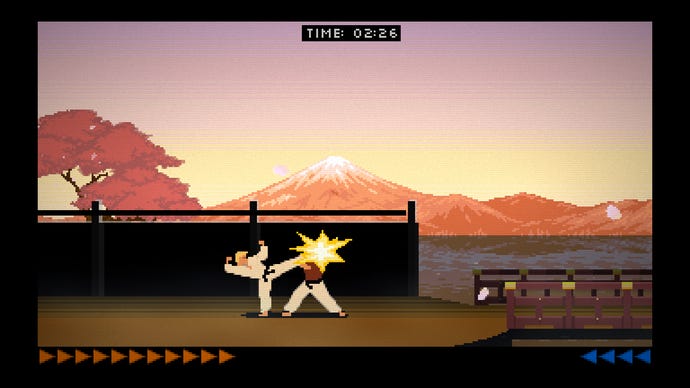
Lest I forget, perhaps the best part of this package is its inclusion of multiple playable versions of Karateka, from unpolished betas to the Apple II release to the Atari 800 and Commodore 64 ports. Digital Eclipse were even thorough enough to include Deathbounce and Jordan's homebrew hack of Asteroids, two unpublished projects that preceded Karateka and directly led to its creation. If that weren't enough, both Deathbounce and Karateka receive impressive remastered versions, with the former transforming into a slick twin-stick shooter and the latter into a shiny cinematic platformer, with sakura blossoms falling all across the first level. In a nice ode to correcting the lack of representation of the '80s, Karateka's remaster features an Asian protagonist on its revised box art, transforming the extremely white and blond hero of the original game (who we now know was designed to look like Luke Skywalker, according to design documents included within) into an ethnicity more suited to an ancient Japanese setting.
If you care about games history and preservation, you owe it to yourself to give The Making Of Karateka a whirl. Projects like this need to be supported, and Digital Eclipse's efforts represent a watershed moment for an industry that is often too busy chasing the next graphical enhancement to worry about writing down its past. I can only hope that the Gold Master Series continues for many more entries and truly becomes the Criterion Collection of video games. What's next - The Making Of King's Quest? Ultima V? Flashback? The possibilities are endless, and I eagerly await them with bated breath.
22. Neyasnoe
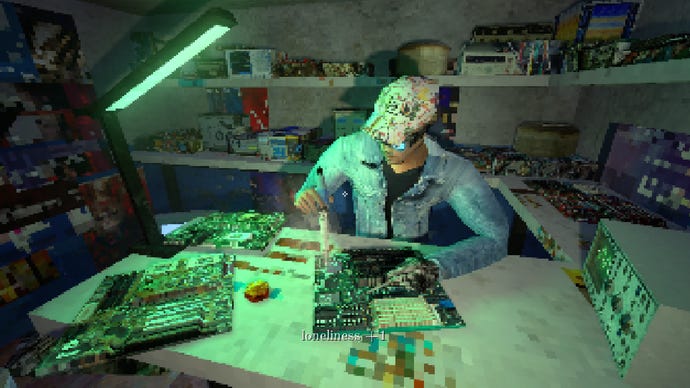
Alice0: It's your big night out! Hit up a bar, drink, dance, chat with friends and strangers, steal drinks, smoke, take drugs, get your blood pressure taken, scoff a kebab, visit a book shop, catch plague from petting giant rats seething in crumbling apartments, get your cybernetic implants checked at a back-alley clinic, drink, smoke, visit a gallery, drink, chat, travel to other districts, drink, smoke, eavesdrop on existential conversations, and pet rats. What a night! You've seen so much! Been so many places! Found so many curiosities as you poked about! Talked with so many people! Drank so much! Smoked so much! Danced so much! So why does your life feel so empty?
Neyasnoe is made by the folks behind It's Winter, 2019's objective-free slice-of-life sim which turned you loose around your grim Russian apartment complex to explore, wander, and fiddle with objects in enough detail that you could cook yourself egg on toast then flush it down the toilet, just because. Neyasnoe is a livelier slice of post-Soviet life but not a much cheerier one.
It's a first-person explorer set around sections of a grim post-Soviety city. All you strictly need do is find the point which will progress you to the next neighbourhood, the next level. But what's the hurry, what are you doing in your life that's so important? Take your time and explore. Like in It's Winter, it's not immediately clear what sort of game it is, what sort of world, nor what you can do here. Follow this surreal winding tunnel which bores through a building and you might find a strange underground waiting room with devices you don't understand. What's in this rooftop? Can I help these strangers at all? Are the consequences to stealing this? Who even am I? Will you ever find out the purpose of your three stats, Loneliness, Corporeality, and Reflexion? It feels full of secrets and mysteries even after completing it twice, an illusion so delightful that I don't want answers lest I discover quite how flimsy it is.
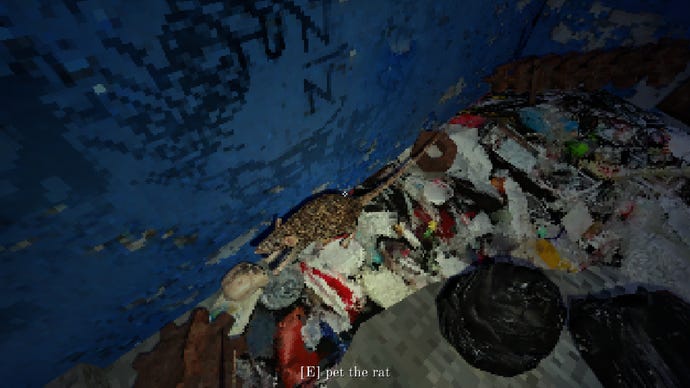
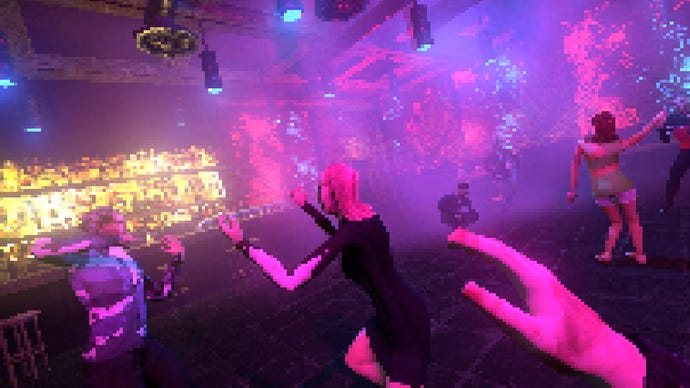
It's not a cheery game. It's exciting to explore as a player but everywhere feels tired and desperate for our character. While much could be set any time in the past 30 years, others show it's actually the future. It's an unchanging grimness. Some characters have hope or plans to change their lives and find something better, to leave the city, but I don't feel that for myself as I steal drinks and stumble around the dancefloor, a lack of hope I try to temporarily drown with hedonistic routine. I understand some folks don't want to touch anything coming out of Russia these days but Neyasnoe does at least not feel remotely glorying.
Also, Neyasnoe has a feature I want in every game: auto-dancing. If you've had a drink and walk onto the dancefloor, you automatically start pulling shapes, waving your arms wildly as you wobble around. Lovely stuff. It has some of the most alarmingly authentic first-person drunkness too, really nailing that feeling of lurching inertia. Pretty game, too.
21. Cocoon
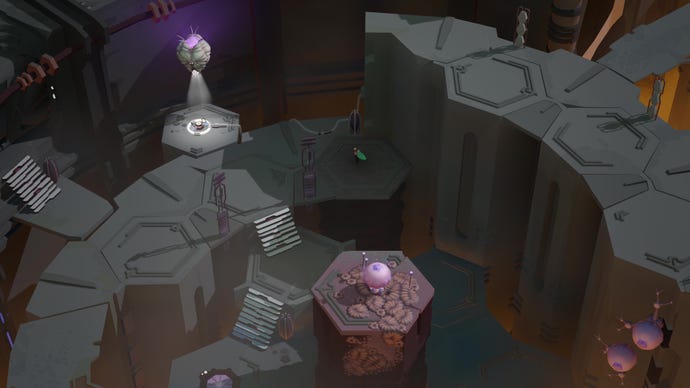
Ed: Cocoon is a puzzler where you play as an insect lad who carries orbs that contain entire worlds. You can treat these orbs like big marbles to manipulate the mysterious alien realms you inhabit, by, like, plopping them down on receptacles or rolling them through pipes. This is where the biomechanical world responds in turn, as gigantic doors yawn open, or platforms form beneath your feet like a network of veins.
So long as you've got a marble on your back, you're also able to use it like a ticket in and out of that world with the slickest of transitions. Through careful environmental cues and subtle gating, the game steers you towards simple solutions through your orb dips. That's what I like about Cocoon, I think. For folks allergic to puzzle games like me, it doesn't snag you on loads of complicated bits or a trillion different ways to fix a problem, but opts for an adventure smoothed out by neat twists on your magic marbles.
I've heard some puzzleheads haven't clicked with it because it's not complicated enough, which is fair! But I don't think that's what the game sets out to do. Yes, it wants to prod and tickle your brain a bit, but I'd say it's more like a massage. As you roll over the metallic knots of the world with your marbles, it presents you with interesting little problems and, crucially, a sense you're undoing the wrongs of some corrupted, godlike insects. Unfurling the world is the real treat.
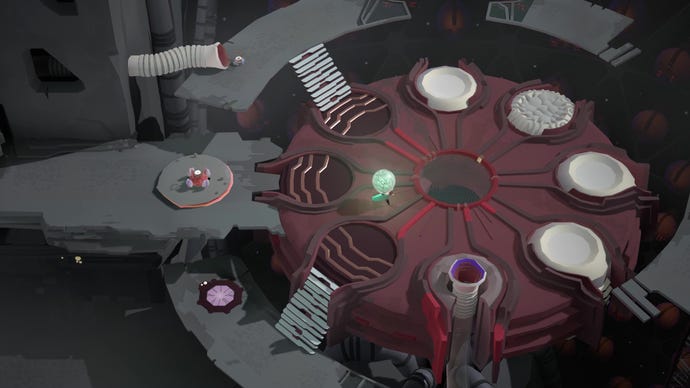

And as you unfurl, the patter of your insect lad's feet and the plop of your marbles provide a soothing accompaniment to relative silence. What this means is when the synth soundtrack kicks in, it elevates whatever you're uncovering or about to uncover. Again, even little snippets of a tune or the odd jingle can help push you towards a new discovery.
If you're a fan of insects, not a fan of puzzles, or like both things, I'd urge you to give Cocoon a go. It'll add some nice relaxing energy to your Christmas.
Alice Bee: Cocoon is one of those games that's quite hard to explain, because conceptually it has a bunch of layers to it, but in the course of playing it you can hold those layers in your head like tissue paper and understand them all. It starts to get confusing if you think too hard about it. It's like looking at a magic eye picture, if a magic eye picture contained more magic eye pictures, and also there's a nice beetle.
20. The Cosmic Wheel Sisterhood

Edwin: There are many things I love about The Cosmic Wheel Sisterhood not least its charismatically illustrated and written queer cast. But if I had to boil it down to a single strength, it’s that this is a game in which you complete the story by assembling your own storytelling instrument. It's a game in which you collaborate with the developer to build your own sets of richly open-ended symbols - symbols you can use like a set of skeleton keys, to intervene with various characters and shape the wider universe.
In Deconstructeam’s sumptuous, adventurous visual novel, you’re an exiled seer, Fortuna, who is bodging together her very own custom deck of Tarot cards with the assistance of a menacing, yet surprisingly likeable (indeed, sort of romanceable) Behemoth. Over 10 hours or so, you resize and mash together props and backdrops using an MS Paint-style editor, unlocking sets of pre-written associations in response. You then use these cards to scry the futures of the other witches – old friends, old rivals and a smattering of new faces - who come to visit your lonely asteroid refuge. In the course of performing each reading, you play cards in response to each character’s questions and so, steer the plot, without ever setting foot outside your astral home.
The cards you pick during readings all generate certain kinds of elemental energy, which you need to create fresh cards. Naturally, there’s a tension during card readings between the dictates of this resourcing system, and wanting to draw cards that tell specific stories. It’s the right kind of pressure to optimise - not outright forcing you to squeeze the most out of each card or reading, but applying mundane economical considerations that cause you to think harder about who particular cards are for, and to what degree your deck reflects the bitterness, kindness or ruthlessness felt by the game’s protagonist towards her estranged coven.
There’s also, of course, a tension between what the developers tell you the cards mean, and what you intended as their creator within the game. Part of the fun is this feeling of amicable disagreement with Deconstructeam over the correct analysis of, say, a card depicting a host of angels with trumpets sticking out of their bottoms. (Yes, that's one of mine.)
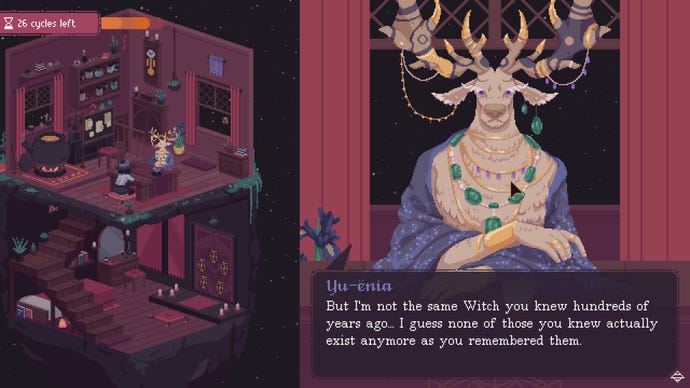
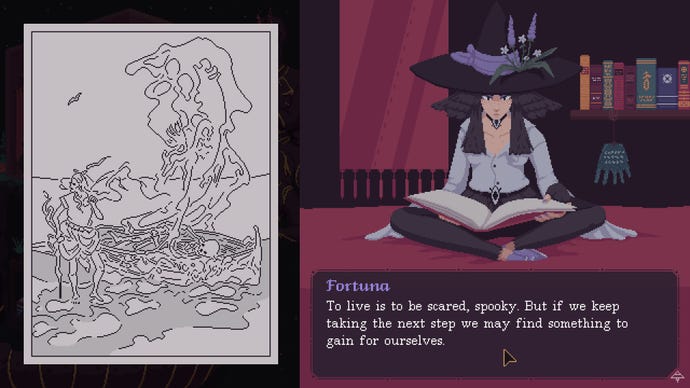
With each card you create, you commit the associations of certain motifs to memory and grow more assured in your recombinations, more confident of the marks they leave on destiny. By the end of The Cosmic Wheel Sisterhood, you're the architect of a collection of resonant, layered designs that might continue to have meaning for you in life beyond the game. There's never been anything quite like this, for my money. I hope there will be in future.
